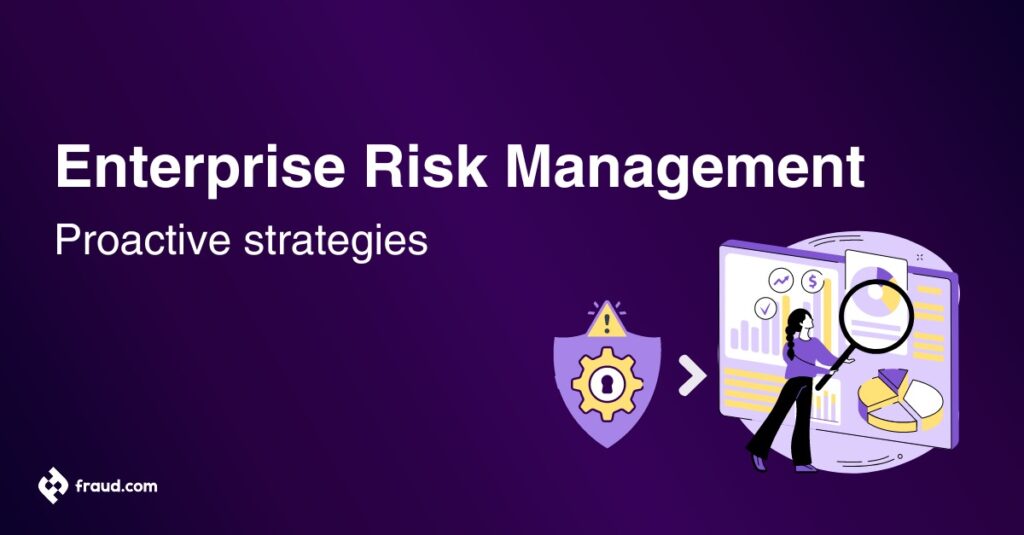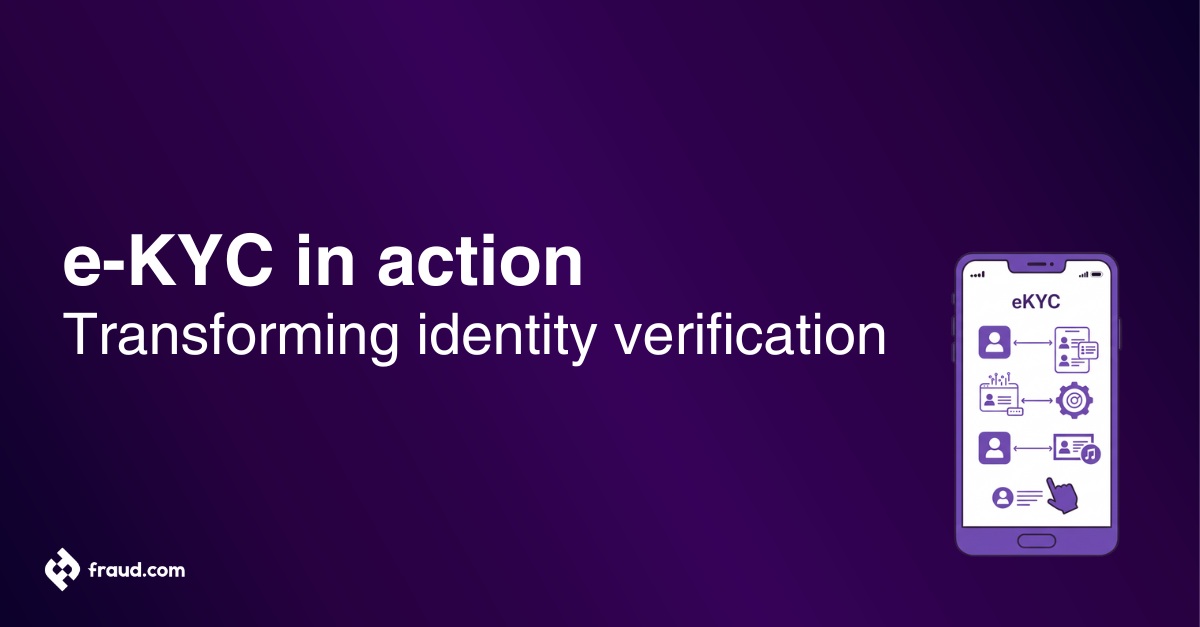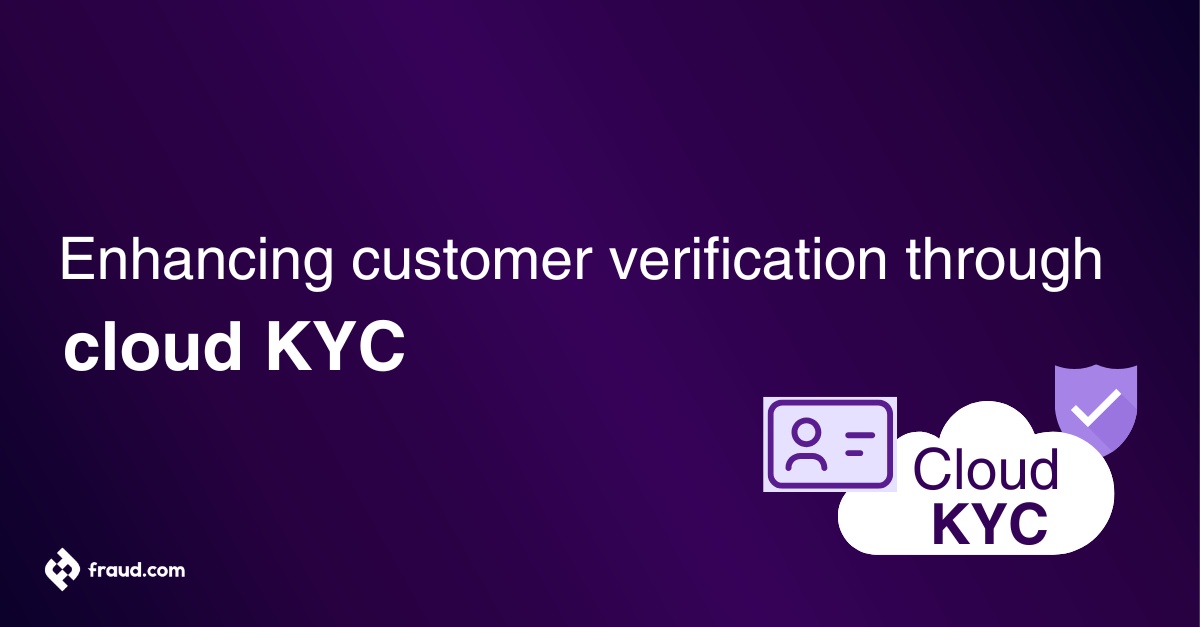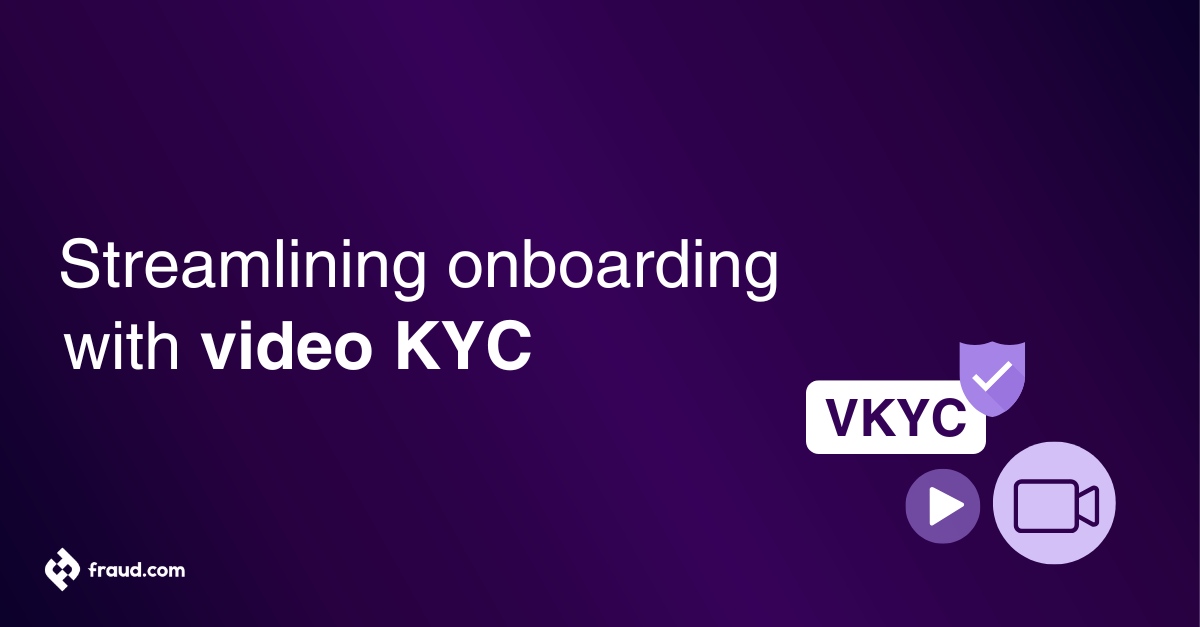Enterprise Risk Management (ERM) serves as the cornerstone of an organization’s strategic resilience in today’s dynamic business landscape. It is a comprehensive framework that goes beyond traditional risk management, offering a proactive approach to identify, assess, and manage a diverse array of risks that could otherwise jeopardize an organization’s sustainability and competitive edge.
In this article, we explore Enterprise Risk Management, which is complex and requires a holistic view. By taking a company-wide approach, businesses can improve teamwork and effectiveness, gaining a big advantage in the ERM process.
Table of Contents
ToggleWhat is Enterprise Risk Management
Enterprise Risk Management (ERM) serves as the architectural framework for an organization’s risk management processes, providing a strategic and encompassing approach to navigating the spectrum of diverse risks. ERM takes a strategic approach to risk management by considering the entire organization as a unified entity. These risks, with the potential to significantly impact the organization’s operational fabric, can result in enduring competitive disadvantages if not carefully addressed.
ERM functions as a dynamic mechanism, identifying potential exposures to different types of risks that might compromise operational integrity. Its scope expands to supervising strategic projects, ensuring a holistic integration of risk management principles into organizational decision-making. Moreover, ERM plays a pivotal role in fostering business continuity and establishing resilient pathways for the organization to thrive amidst evolving challenges.
Fundamentally, ERM serves as a watchman, not merely identifying risks but orchestrating a comprehensive strategy to mitigate and manage them. By providing a panoramic view of potential pitfalls, ERM empowers organizations to proactively safeguard their operational landscapes, fortifying against long-term vulnerabilities and fostering enduring competitive strength.
What are the 5 components of enterprise risk management?
Enterprise Risk Management (ERM) consists of five main key components that collectively fortify an organization’s ability to manage and mitigate risks effectively. In the following section, we will delve deeper into these components:
- Risk identification
- Risk evaluation
- Determining risk appetite
- Strategic execution for risk management
- Holistic risk perspective
These components are integral to building a resilient and proactive risk management framework within an organization.
Key components of Enterprise Risk Management
In the previous section, we outlined the five main components of Enterprise Risk Management (ERM). Here, we will describe these in detail along with a couple more key components that contribute to a robust ERM framework.
As a sophisticated and multifaceted process, ERM is designed to fortify an organization’s resilience in the face of diverse risk exposure. Its comprehensive nature is evident in the following key components:
Risk identification:
- Using advanced data analytics and intelligence tools: Employing cutting-edge data analytics and intelligence tools allows us to proactively identify potential risks before they escalate. By harnessing the power of advanced technology, we can sift through vast datasets, detect patterns, and uncover latent risks that might otherwise go unnoticed. This proactive approach empowers organizations to stay ahead of emerging threats and implement preventive measures promptly.
- Conducting thorough risk assessments: Commitment to risk management involves conducting thorough risk assessments across various operational domains. This comprehensive approach ensures that no stone is left unturned when identifying potential threats. By scrutinizing each operational facet, a robust foundation for risk mitigation strategies is created, bolstering resilience against a wide spectrum of challenges.
Risk evaluation:
- Employing sophisticated methodologies: In the world of risk evaluation, sophisticated methodologies must be employed to go beyond mere identification. This approach delves into assessing and quantifying the impact and probability of identified risks. This nuanced analysis enables prioritising risks based on their potential severity, allowing the allocation of resources efficiently and addressing the most critical threats first.
- Continuously monitoring and updating risk evaluations: Recognizing the dynamic nature of business landscapes, by adopting continuous monitoring and updating mechanisms for risk evaluations. This process ensures that our risk assessments remain relevant and adaptive to evolving circumstances. By staying vigilant and responsive, organizational agility is enhanced in the face of ever-changing risk landscapes.
Determining risk appetite:
- Establishing a clear and well-defined risk appetite: At the core of an effective risk management strategy is the establishment of a clear and well-defined risk appetite. This involves aligning risk tolerance with the organization’s strategic initiatives. By setting explicit boundaries for acceptable risk, a framework that guides decision-making at all levels, promoting consistency and coherence.
- Involving key stakeholders: To ensure that risk appetite resonates throughout the organization, key stakeholders, including senior management and the board of directors, are actively involved in defining acceptable risk thresholds. This collaborative approach fosters a shared understanding of risk tolerance, aligning the entire leadership team in the pursuit of strategic objectives.
Strategic execution for risk management:
- Developing and implementing robust strategies: Strategic execution in risk management involves more than just theoretical planning; it requires the development and implementation of robust strategies. Approaches to manage and mitigate identified risks are meticulously designed, incorporating best practices and lessons learned. This proactive stance positions the organization to navigate challenges with resilience and foresight.
- Integrating risk management into strategic planning: The commitment to risk management extends into the strategic planning processes of the organization. By seamlessly integrating risk considerations into strategic planning, it ensures that risk management becomes an intrinsic part of decision-making. This alignment with organizational goals enhances the overall effectiveness of risk management strategies.
Holistic risk perspective:
- Adopting an enterprise-wide approach: To cultivate a holistic risk perspective, an enterprise-wide approach is adopted that transcends departmental boundaries. By viewing risk strategically across the entire organization, insights into interconnected risks and their potential cascading effects are gained. This comprehensive outlook enables the implementation of preventive measures that address risks at their roots.
- Breaking down silos and fostering collaboration: Breaking down silos is essential for effective risk management. Cross-functional collaboration is actively fostered to enhance the efficiency of risk management efforts. This collaborative mindset ensures that information flows seamlessly across departments, allowing for a unified approach to risk identification, assessment, and mitigation.
Cohesion and efficiency:
- Reinforcing cohesion through integration: Cohesion within the organization is reinforced by seamlessly integrating risk management into day-to-day operations. This integration is not a standalone process but becomes an inherent part of how business is conducted. By embedding risk management practices into daily routines, a culture of awareness and preparedness is created, strengthening the organizational fabric.
- Establishing communication channels: Communication plays a pivotal role in maintaining cohesion and efficiency in risk management. Establishing communication channels that facilitate the flow of risk-related information across all organizational levels is essential. This transparent exchange of information ensures that insights from different teams inform collective decision-making, contributing to a more resilient and responsive organization.
Competitive advantage:
- Leveraging the enterprise-wide approach: The enterprise-wide approach to risk management becomes a source of competitive advantage. By leveraging this comprehensive perspective, a strategic edge is gained in identifying and addressing risks that may impact competitors. This foresight enhances the ability to navigate uncertainties, positioning the organization as a resilient and proactive player in the market.
- Enhancing organizational agility: The integration of risk management practices into the strategic framework enhances organizational agility. This agility is crucial in responding promptly to emerging risks and market dynamics. By staying nimble and adaptive, the organization positions itself not only to survive in a dynamic business environment but also to capitalize on opportunities that arise, further solidifying its competitive advantage.
By addressing these key components, ERM not only identifies and mitigates risks but also integrates risk management as a strategic driver for organizational success. This holistic perspective ensures that risks are managed proactively and efficiently across the entire organizational landscape, ultimately providing a robust and sustainable competitive advantage.
What types of risks does Enterprise Risk Management address?
Enterprise Risk Management (ERM) tackles a wide array of risks that can hinder an organization’s ability to meet its objectives. Here are the main and widely recognized types:
- Strategic risks: These include risks related to business decisions, market competition, and changes in consumer demand that can affect the organization’s strategic goals.
- Operational risks: These involve risks arising from day-to-day operations, such as supply chain disruptions, equipment failures, or process inefficiencies.
- Financial risks: ERM covers financial uncertainties, including market volatility, currency fluctuations, credit risks, and funding challenges.
- Compliance risks: This category includes risks related to regulatory changes, legal requirements, and adherence to industry standards.
- Reputational risks: ERM considers risks that can damage an organization’s brand and public perception, such as negative publicity or unethical behavior.
- Security risks: These encompass risks associated with data breaches, cyber-attacks, and physical security threats that can compromise sensitive information and assets.
- Legal risks: ERM addresses potential legal exposures, including litigation, contract disputes, and intellectual property issues.
By addressing these diverse types of risks, ERM provides a comprehensive framework that helps organizations navigate uncertainties, protect their assets, and achieve long-term success.
What are the main 3 types of enterprise risk?
Although the previous section describes seven types of enterprise risks, three primary types are particularly critical. Here is a more detailed description of these main types:
- Strategic risk: These risks arise from adverse business decisions or the failure to implement appropriate business strategies. Strategic risks can impact an organization’s ability to achieve its long-term goals and include factors such as changes in market demand, competitive pressure, and shifts in industry dynamics.
- Operational risk: These risks pertain to the internal processes, people, and systems within an organization. Operational risks can result from human error, system failures, or inadequate internal procedures. Examples include supply chain disruptions, IT system breakdowns, and errors in day-to-day operations.
- Financial risk: These risks involve the management of financial resources and the potential for financial losses. Financial risks can stem from market fluctuations, credit risks, liquidity issues, and changes in interest rates or foreign exchange rates. Effective financial risk management is crucial for maintaining the organization’s financial stability.
Understanding and managing these main types of enterprise risk is essential for maintaining organizational resilience and achieving long-term success.
Transformative strategies for holistic Enterprise Risk Management
Risk identification and assessment:
- Adopting advanced data analytics: Deploy sophisticated analytical tools to uncover unseen risk patterns and trends for proactive risk mitigation.
- Scenario planning for proactive risk measures: Implement forward-looking scenario planning techniques to identify and counter future uncertainties.
Technology integration in ERM:
- AI and Machine Learning in risk analysis: Employ AI and machine learning for predictive risk analysis, facilitating early detection and addressing of risks.
- Advanced risk management software for monitoring: Use cutting-edge software for real-time risk monitoring, enabling swift and effective decision-making.
Fraud orchestration as the main strategy:
- Integrating fraud orchestration: Coordinate anti-fraud operations and responses to enhance fraud prevention and management with fraud orchestration.
- Leveraging AI and data analytics: Adopt advanced warning systems driven by AI and Machine Learning and operational analytics for comprehensive security and proactive fraud prevention.
Crisis response planning:
- Regular update of crisis response plans: Consistently update crisis response plans to effectively navigate unforeseen challenges.
- Simulated crisis scenarios for preparedness: Utilize realistic crisis simulations to refine response strategies and enhance organizational resilience.
Collaborative risk culture:
- Culture of risk-awareness: Establish a pervasive risk-aware culture to contribute to overall resilience and risk mitigation efforts.
- Cross-functional collaboration in Risk Management: Encourage cross-departmental collaboration for a comprehensive understanding and effective management of risks.
Continuous monitoring and reporting:
- Regular risk monitoring mechanisms: Implement robust regular risk monitoring mechanisms for proactive detection and strategy development.
- Clear and inclusive reporting structures: Establish straightforward reporting structures using cutting-edge technology for efficient, reliable, and timely decision-making.
Inclusive reporting and Robotic Process Automation:
- Inclusive reporting for transparency: Implement inclusive reporting practices to foster reporting compliance transparency and a comprehensive understanding of the risk landscape.
- Robotic Process Automation for Efficiency: Incorporate Robotic Process Automation (RPA) to streamline response processes and enhance accuracy.
Adapting to regulatory changes:
- Active monitoring of industry regulations: Stay updated on evolving industry regulations to ensure operational compliance and mitigate compliance risks.
- Agility in the ERM framework: Inculcate agility in the ERM framework for swift adjustments in response to regulatory changes.
In conclusion, Enterprise Risk Management (ERM) transcends mere risk mitigation; it is a strategic instrument for fostering business resilience and future growth. Establishing a robust ERM program, fortified with transformative strategies, empowers organizations to shape their operational risk responses efficiently and maintain a competitive advantage in the dynamic international standard marketplace.
What is the difference between Risk Management and Enterprise Risk Management?
While Risk Management and Enterprise Risk Management (ERM) may appear similar, they serve distinct roles within an organization.
Risk Management focuses on identifying, assessing, and mitigating risks within specific areas or projects. It is more localized and reactive, dealing with immediate threats that could impact individual departments or initiatives.
In contrast, Enterprise Risk Management (ERM) adopts a holistic approach, embedding risk management into the organization’s overall strategic framework. ERM considers the interconnected nature of various risks across all business functions, aiming to identify, prioritize, and manage these risks in alignment with the organization’s objectives. This forward-looking and proactive approach ensures that potential threats and opportunities are considered within the broader corporate strategy.
By integrating ERM, organizations can better navigate uncertainties, strategically allocate resources, and achieve sustainable growth, establishing a solid foundation for long-term success.
What is an example of ERM?
To understand Enterprise Risk Management (ERM) in practice, let’s look at how a multinational corporation might implement an ERM framework.
Scenario:
The corporation is preparing to launch a new product line in several international markets.
Traditional Risk Management: In a traditional setup, different departments like marketing, finance, and supply chain would handle risks independently. Marketing might worry about brand perception, finance about cost overruns, and supply chain about logistical issues. Each department would manage its own risks without a unified strategy.
Enterprise Risk Management (ERM): With ERM, the corporation adopts a comprehensive approach. Senior leadership gathers to assess the new product launch from a strategic perspective, identifying and evaluating risks across the entire organization, for example:
- Market Risks: Analyzing global economic conditions and their potential impact on customer demand.
- Operational Risks: Assessing the supply chain’s capability to support international distribution.
- Financial Risks: Evaluating currency fluctuations and funding requirements.
- Compliance Risks: Ensuring adherence to local regulations and standards in all target markets.
By integrating these insights, the corporation can create a unified risk management strategy that covers all aspects, improving decision-making, enhancing resilience, and aligning the product launch with overall business goals.
This holistic approach illustrates how ERM enables organizations to view risks strategically, fostering sustainable growth and responsible risk-taking.
Enterprise Risk Management by fcase: Empowering fraud prevention
Fraud Orchestration by fcase: A central component
Within the sphere of Enterprise Risk Management (ERM), fcase takes centre stage, transforming the landscape of fraud operations management. As the operational engine, fcase orchestrates the unification and centralization of data across multiple channels, eliminating blind spots and providing a 360-degree view of all activities.
fcase’s integral role in ERM
By breaking down data silos, fcase seamlessly integrates information from diverse sources such as transaction logs, user behaviour patterns, and external threat intelligence, ensuring a unified and comprehensive dataset within the ERM framework and improving decision-making in fraud risk management.
Comprehensive ERM visibility
fcase’s strength lies in offering a holistic perspective within the realm of ERM, leaving no blind spots. This comprehensive view extends across multiple channels, providing insights into potential risks often overlooked by conventional systems. Moreover, fcase’s data can fulfil your fraud reporting compliance needs, enabling the generation of diverse reports central to ERM requirements.
Advantages of fcase in ERM
The benefits of fcase’s approach within the ERM context are evident:
- Reduction in ERM overhead costs
- Streamlining ERM data integration and centralization processes
- Minimizing resource-intensive operations of disparate ERM systems
fcase empowers ERM with real-time insights and proactive prevention strategies, enabling swift, automated responses to detected threats with robust RPA. This results in fewer successful fraud attempts and a significant decrease in the overall cost of fraud within the ERM framework. fcase optimizes operational efficiency while elevating the effectiveness of fraud prevention measures, making it a central and indispensable ally in the broader scope of Enterprise Risk Management.









